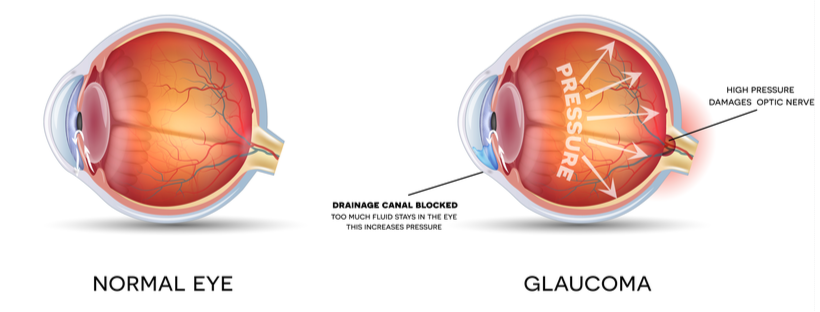Glaucoma is a group of eye conditions that adversely affects vision and may eventually lead to blindness. Although glaucoma may occur at any age, it is more common in older adults and is the leading cause of blindness in people over the age of 60.
Those affected by glaucoma typically have abnormally high intraocular pressure. Intraocular pressure, best characterized as fluid pressure within the eye, can trigger an optic nerve injury. This condition can be dangerous as the optic nerves are unable to deliver images to the brain for interpretation. This condition, if left untreated, can develop into irreversible blindness.

Glaucoma may present itself in a variety of forms. Open-angle and angle-closure are the two primary forms. An increase in intraocular pressure (IOP), or pressure inside the eye, characterizes certain conditions.
Open-Angle Glaucoma is the most common form of the disease and happens when the eye does not drain fluid as well as it should, causing pressure build-up and damaging the optic nerve, ultimately leading to glaucoma.
Closed-Angle Glaucoma is a less common form of the disease and occurs when someone’s iris blocks the drainage angle, leading to eye pressure building quickly.
Depending on the type and severity of glaucoma, various surgery procedures are available. An eye examination with an ophthalmologist is the most effective strategy to prevent the condition from worsening. Eye drops, microsurgery, and other types of laser surgery are a few of the therapy options an eye care specialist may recommend.
While glaucoma cannot be prevented, it can be managed in several ways. If you are experiencing symptoms of glaucoma, early detection and management may help decrease your chances of total vision loss.






